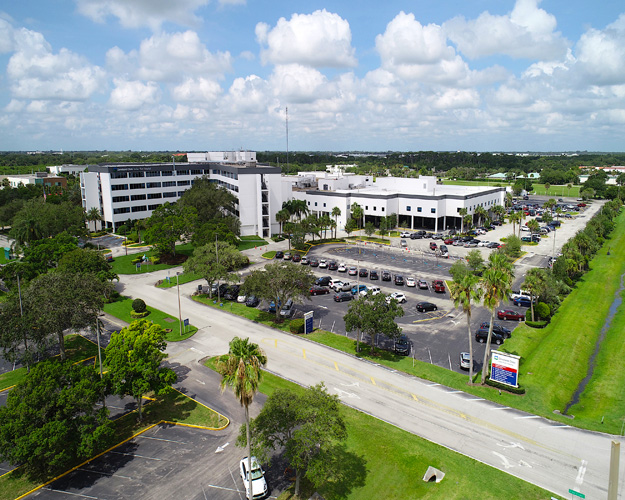The latest COVID-19 surge may finally have peaked, with new weekly infections here flattening around the 500 mark as the Vero Beach area remains a zone of high community transmission.
The CDC reported 18 new hospital admissions in the seven days ending Aug. 3, and as of press time Monday, local hospitalizations had fallen significantly from last week.
“We have 15 COVID patients in-house at Indian River Hospital this morning, none of which are in critical care,” Cleveland Clinic spokesperson Arlene Allen-Mitchell said on Monday.
That number is down 44 percent from 27 patients in the hospital the previous week.
Florida’s case numbers were relatively flat last week, with covid deaths up slightly.
Nationwide, reports of new positive cases were down 9.8 percent compared with two weeks ago, but deaths were up by 21.3 percent in that same two-week timeframe.
While a collection of troublesome symptoms termed “long covid,” which affects at least 5 percent of people who contract the virus, is a growing concern with no clear treatment plan in place, some attention was paid this week to the “rebound” of COVID-19 symptoms, as President Joe Biden experienced this phenomenon after testing negative for the virus.
A study commissioned by drug makers and supported by the National Institutes of Health released initial, un-reviewed findings last week showing that more than one quarter of the people in a trial of nearly 600 patients had a setback or “rebound” of symptoms after initially feeling like they had recovered from COVID-19.
Researchers are still trying to understand the rebound of symptoms, which can even cause the patient to test positive again – as in Biden’s case – after testing negative. Of the study subjects with COVID-19 illness, 12 percent tested positive after testing negative – regardless of whether the patient had been treated with the Paxlovid drug.
The White House Covid Response Coordinator said the type of rebound Biden experienced after taking Paxlovid is “rare,” occurring in about 5 percent of patients. But one unanswered question remains: how many average citizens who don’t have a team of doctors monitoring their every cough and sniffle would actually keep testing repeatedly for COVID-19 after they felt better and tested negative twice, to document a rebound positive test? Likely not many.
Though Biden went back into isolation after his rebound positive test, common sense says most people who had recovered and tested negative would be back in circulation at work, school or social functions as soon as they tested negative. The rebound phenomenon means that there’s a chance those covid survivors could still infect others for a few days or a week after being back in the mix.
Earlier in the pandemic, in the days of the 14-day or 10-day quarantine, this would not have been that big of an issue. But since CDC guidance changed back in March to recommend only a five-day quarantine, people are emerging from their sick beds to report back to work or school much sooner.
Despite the official five-day quarantine guidance issued in March to mitigate the impact of COVID-19 absences on workforce productivity and the economy, the CDC still recommends that COVID-19 patients experiencing symptoms isolate for 14 days “when possible.”
The safest course of action for those recovering from COVID-19 would probably be to social distance, wear a mask and postpone travel for a week or so after testing negative – especially if a nagging cough or other symptoms linger on. Under the current conditions with Indian River County labeled both an area of High Covid Community Level and High Community Spread, the CDC would prefer everyone wear a facemask indoors anyway.

